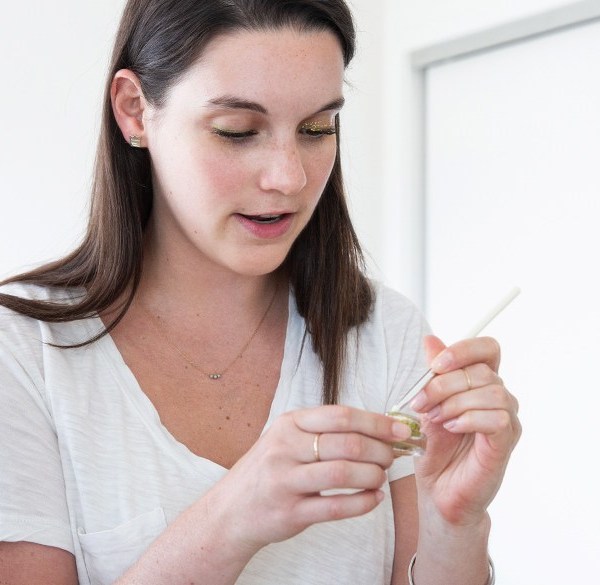The death toll nationwide is staggering. A record 72,000 people died of drug overdoses in 2017.
Overdose deaths were up 10 percent in South Dakota. More people are dying from drug overdoses than HIV, car crashes or guns.
Strong synthetic opioids like fentanyl are often mixed into the black-market supplies of heroin, cocaine, methamphetamine and anti-anxiety medications. Dealers use fentanyl because it’s cheap and easy to get through the mail. Out of the 13 deaths in the Sioux Falls area this year already, most were fentanyl related.
And while we here at KELOLAND News have brought you information on this alarming trend, now it’s become personal to all of us who work here.
KELOLAND’s Angela Kennecke lost her 21-year-old daughter Emily to fentanyl poisoning in May.
After taking a leave of absence to cope with her and her family’s loss, Angela is telling the story of what happened to Emily publicly for the very first time Wednesday night. We hope by sharing her story, it will make you realize this problem can hit home and compel you to take action to help combat the issue.
Angela Kennecke:I thought she was the most amazing kid in the world. I was so proud of her. First of all, she was intellectually gifted. She was artistically gifted. She was athletically gifted. And I used to always tell her with so many gifts comes great responsibility to the world, to bring those gifts to the world.

也许it’s no surprise since her birth was such a public thing because I’m in the public eye that her death is now such a public thing too. I have to embrace that. I really can’t hide from that. So, I think it’s best if I just tell my story and let everyone out there know what happened to my daughter. Because I really believe it could happen to anyone’s daughter. It can happen in anyone’s family. And it starts with addiction.
It was soon pretty evident that the whole drug culture was pretty attractive to her and I was really concerned as a mom. It’s hard to know what to do. I really feel for everyone out there who has a child that has an addiction problem, because you don’t know where to turn. And there’s so much stigma surrounding this, it’s hard to even talk to other people about it.

Everything in my instincts told me something is seriously wrong here. And we would see Emily quite a lot. She wasn’t living with us. She was 21 years old. But the more time I spent around her before her death, the more alarm bells went off in my head. And so we hired an interventionist to get her into treatment.
We met on a Saturday and the intervention was planned for the following Saturday, and my daughter died on a Wednesday. We didn’t get that chance. We didn’t get that chance to get her into real treatment, to get her real help. And then when I found out what she’d been doing–the cause–it was unbelievable to me. The fact that my daughter would be using heroin and needles—my beautiful daughter who was very privileged; had every opportunity in life to have a great life–had gone down this road. It was shocking to me.
I consider myself a wordsmith. I write for a living–every day. But there are not words to describe the devastation I feel at the loss of my daughter. There is nothing that can even come close to describe the grief and the sorrow, the pain. And all of the loss–what she could have been–what if?
And as a mom–I have a hole in my heart that will always be there. It is never going to heal. I have other children that I love. I have a husband that I love. But nothing and nobody can replace the loss of my oldest child. And she was only 21.
According to the autopsy report, Emily had six times what would be considered a therapeutic dose of fentanyl for the largest man. And she was just a small young woman. She didn’t stand a chance. That fentanyl killed her almost instantly after she injected it.

Her chair sits empty at the kitchen table. That’s when it really hurts, when I look across the table and there’s her chair and she’s not there. She’s never coming back–the permanency of it. I was robbed of my daughter. I was simply robbed.
No matter what happens to them, no matter who’s charged or if anybody is charged directly with her death, while they say they know who she got it from, nothing will ever bring her back.
She was a beautiful girl and she deserved to live. And she deserved a chance to get help. And she engaged in risky behavior. But she didn’t deserve to die.
I’ve set up a fund called“Emily’s Hope”because I never gave up hope on my daughter. And I want her life and her tragic death to at least give someone else hope.

By telling Emily’s story and my story of loss and pain and suffering. I’m opening myself up. I’m being vulnerable to our audience in a way I’ve never been before. But I do feel it’s super important I do that. Because if just one person hears me. If just one person does one thing to save a life, then I don’t care about a million naysayer’s or people who don’t understand. I just care about that one mother that I can stop from experiencing the pain that I have.
Emily’s Hope is a fund set up through the Avera McKennan Foundationto help offset the cost of addiction treatment when Avera’s new treatment center opens next fall.
All monies raised will help those suffering from addiction with insurance co-pays and things like rent and utilities.
We’ve started aspecial page for all of our coverage on this topic; find it onKELOLAND.com.














